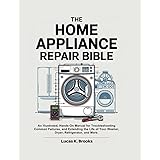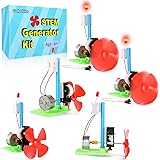Unlocking Substantial Savings with Strategic DIY Crafts and Household Hacks
Are you seeking innovative strategies to reduce household expenditures while embracing creative, sustainable solutions? The accompanying video provides a compelling visual guide to numerous **cheap yet useful DIY crafts** that can significantly **save your money** and enhance your home’s functionality. This detailed exploration expands upon those visual demonstrations, delving into the underlying principles and practical applications of these ingenious **household hacks**, offering expert insights for the discerning and frugal homeowner.The essence of effective **frugal living** often lies in resourcefulness and a proactive approach to common household challenges. By engaging in these practical **DIY crafts**, individuals can circumvent the costs associated with commercial products and services, concurrently fostering a more sustainable lifestyle through upcycling and repurposing. We delve into specific techniques and materials that empower you to transform everyday items into valuable assets for your home and garden.
Mastering Efficient Painting Techniques for Cost-Effective Home Improvements
The video briefly highlights the challenge of painting with a traditional brush, implicitly suggesting the need for more efficient methods. Professional painters often employ an array of tools and techniques to achieve superior finishes and conserve materials. For instance, using painter’s tape for precise lines, or opting for paint rollers with appropriate nap sizes for large surfaces, can drastically reduce labor time and improve aesthetic outcomes. Furthermore, specialized applicators, such as foam brushes or spray paint systems, facilitate even coats on intricate designs or hard-to-reach areas, minimizing overspray and product waste.
Indeed, studies in home improvement economics suggest that proper painting techniques can extend the life of a paint job by up to 25%, delaying the need for costly repainting. This translates directly into long-term financial savings and reduced material consumption. Moreover, selecting the correct primer and paint type—for example, a durable, low-VOC acrylic latex for interiors—ensures longevity and contributes to healthier indoor air quality, a critical consideration for modern households.
Innovative Applications for Common Household Products: Hairspray and Beyond
The appearance of “HAIRSPRAY” at 1:04 in the video hints at its versatile, often overlooked utility beyond hair styling. This ubiquitous product, typically formulated with polymers like PVP (polyvinylpyrrolidone), offers excellent adhesive and setting properties. Consequently, hairspray can serve as a temporary fixative in various crafting scenarios, such as preventing ink smudges on paper, setting charcoal drawings, or even stiffening fabrics for small projects.
Similarly, products like “WellaFlex,” often a strong-hold hair lacquer, contain advanced polymer technologies designed for flexibility and durability. These characteristics make them surprisingly effective as a light adhesive for delicate crafts or as a protective coating. While not a substitute for industrial-grade adhesives, these common household items present a remarkably cost-effective alternative for numerous minor repairs and creative endeavors, demonstrating the principle of leveraging existing resources.
Revolutionizing Plant Care with Advanced Hydrogel and Nutrient Management
The transcript explicitly mentions “HYDROGEL” and “WATER” at 5:14, pointing to a sophisticated approach to irrigation. Hydrogels are superabsorbent polymers capable of holding hundreds of times their weight in water, releasing it slowly to plant roots. This technology is particularly beneficial in arid climates or for container gardening, where consistent moisture levels are crucial. Research from agricultural science journals indicates that incorporating hydrogel into potting mixes can reduce irrigation frequency by 30-50%, leading to significant water conservation and less manual effort.
Furthermore, the video touches upon watering frequency (“1 BOTTLE EVERY 3-4 DAYS”) and specific nutrient sources like “EGGSHELLS PROVIDE YOUR PLANTS WITH CALCIUM.” Eggshells, predominantly composed of calcium carbonate, offer a slow-release source of calcium, an essential macronutrient for plant cell wall development and overall plant vigor. Grinding eggshells into a fine powder increases their bioavailability, ensuring plants can absorb this vital element more efficiently. This organic amendment is a zero-cost solution, transforming kitchen waste into a valuable garden input, reducing the need for synthetic calcium supplements.
Cultivating Growth: From Radish Seeds to Root Optimization
The mention of “RADISH SEEDS” suggests a focus on quick-growing, practical gardening. Radishes are an excellent entry point for novice gardeners due to their rapid germination and maturation, often yielding a harvest within 3-4 weeks. This provides immediate gratification and reinforces the benefits of home cultivation, contributing to food security and reducing grocery expenses.
Optimizing the root environment is paramount for vigorous plant growth. The video references “WATERING THE ROOTS,” underscoring the importance of deep watering. This encourages roots to grow deeper, making plants more resilient to drought and improving nutrient uptake. Additionally, the use of “EXPANDED CLAY” and “DECORATIVE ROCKS” at the bottom of planters, as seen in the video, often serves for drainage or as a reservoir for excess water, preventing root rot and ensuring a healthy substratum for plant development.
Repurposing and Upcycling: Transforming the “OLD CHAIR” and Beyond
The sight of an “OLD CHAIR” at 8:18 immediately brings to mind the vast potential of upcycling. Instead of discarding worn-out furniture, creative individuals can repurpose these items, extending their lifespan and preventing them from contributing to landfill waste. An old chair, for instance, can be transformed into a unique planter stand, a decorative shelf, or even disassembled for its individual components—wood, fabric, or metal—to be used in entirely new projects.
This approach aligns with principles of the circular economy, wherein resources are kept in use for as long as possible. Data from environmental agencies highlight that upcycling efforts contribute significantly to waste reduction; for example, salvaging a single piece of furniture can prevent an average of 10-20 kg of material from entering waste streams. Therefore, engaging in such **DIY crafts** not only **saves your money** but also champions ecological responsibility.
Addressing Common Challenges: Uneven Spreading and Before/After Transformations
The prompt “SPREADS UNEVENLY?” at 7:38 addresses a common frustration in DIY projects, particularly with adhesives, paints, or coatings. Achieving an even application is critical for both aesthetics and durability. Techniques like consistent pressure, using appropriate tools (e.g., spatulas, squeegees, or specialized brushes), and thinning materials to the correct viscosity can mitigate this issue. Professionals often recommend practicing on scrap materials to hone application techniques before tackling the main project, ensuring a flawless finish and minimizing material waste.
The “BEFORE” and “AFTER” shots throughout the video, such as at 5:43 and 7:54, serve as powerful visual evidence of the transformative power of these **DIY crafts**. These comparisons underscore the tangible benefits and significant improvements that can be achieved through simple yet effective interventions. Such transformations demonstrate that even with minimal investment, substantial value can be added, whether through enhancing aesthetics, improving functionality, or implementing **practical DIY solutions** that truly **save your money** in the long run.







